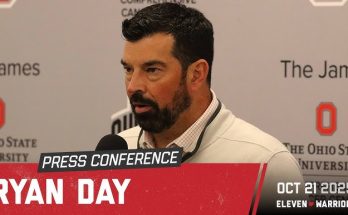Sure! To craft a 1500-word piece based on the game between Clemson and Syracuse with a focus on the defensive efforts and the loss, I’ll provide an extended analysis that touches on various aspects of the game, including team performance, strategy, key players, and what went wrong for Clemson in the contest.
Clemson’s Defensive Struggles and Syracuse’s Resilience: A 67-55 Loss
In a highly anticipated matchup, Clemson’s defense was on full display as they fought tooth and nail to stifle the Syracuse offense. Despite their valiant defensive efforts, the Tigers fell short with a 67-55 loss to the Orange in a game that had more twists and turns than a suspense thriller. While the Tigers’ defense kept them in the game for much of the contest, their struggles on offense ultimately proved too much to overcome, leaving them to rue missed opportunities.
A Defensive Grind: Clemson’s Fierce Effort
From the opening tip, it was clear that this was going to be a game dominated by defensive tactics. Both teams were locked in, making scoring opportunities few and far between. Clemson’s defensive unit, led by their standout players, came into the game with the mindset to disrupt Syracuse’s offensive flow.
The Tigers’ defensive game plan was centered around forcing tough shots, contesting three-pointers, and crashing the boards. Their perimeter defense was solid for most of the game, preventing Syracuse from finding rhythm on the outside. The Orange, known for their three-point shooting ability, were forced to make adjustments, as Clemson closed out hard on shooters and forced them to attack the rim or take contested mid-range jumpers.
Clemson’s frontcourt defenders, in particular, had a strong showing. They used their length and physicality to disrupt Syracuse’s inside game, challenging shots at the rim and fighting for rebounds. It was clear that Clemson’s effort in terms of positioning, communication, and execution was commendable. They had Syracuse in a defensive bind at several points during the game.
However, despite the solid defensive showing, there were moments when the Tigers were caught off guard by Syracuse’s ability to adjust. The Orange’s offensive sets, though slowed by Clemson’s defensive pressure, were dynamic enough to force the Tigers into foul trouble. This helped Syracuse stay in the game and, at times, gain momentum.
Syracuse’s Offensive Adjustment: A Late Surge
Though Clemson had a strong defensive showing early on, the Orange’s offensive game began to show cracks in the second half. Syracuse’s head coach, Jim Boeheim, made some key adjustments that helped his team overcome Clemson’s defense.
One of the most notable changes was Syracuse’s offensive spacing. As the game progressed, the Orange spread the floor more effectively, opening up driving lanes and forcing Clemson defenders to scramble. This forced Clemson’s defenders to make difficult decisions, leaving them open for Syracuse’s high-percentage shots, including several layups and mid-range jumpers.
Moreover, Syracuse’s guards played a key role in the team’s late offensive surge. They found gaps in the Clemson defense and took advantage of mismatches. The trio of guards from Syracuse displayed a level of poise and creativity that kept the Tigers on their heels. Whether it was through quick passes to open teammates or crafty dribbling to break down the defense, Syracuse’s backcourt made the difference when the game was on the line.
Even though Clemson’s defense made it difficult for Syracuse to score in the first half, the Orange’s persistence paid off. As the game wore on, the Tigers’ defensive energy began to wane, and Syracuse capitalized with a more fluid and aggressive offensive strategy.
Clemson’s Offensive Troubles: Missed Opportunities
While Clemson’s defense was certainly a strength throughout the game, their offense faltered at crucial moments. The Tigers’ shooting struggles were a major factor in their loss, as they were unable to consistently find the bottom of the net.
Clemson had a solid defensive game plan, but their lack of offensive firepower left them playing catch-up. The Tigers shot poorly from the field, especially from three-point range, which allowed Syracuse to focus their defensive efforts on the inside. Clemson’s inability to hit shots from beyond the arc put even more pressure on their inside game, which struggled against the length and physicality of Syracuse’s frontcourt.
There were several stretches during the game where Clemson was unable to generate any offensive momentum. Despite their solid ball movement and offensive sets, they couldn’t convert enough of their opportunities into points. This was particularly evident in the second half, where missed layups and free throws plagued their offense, preventing them from closing the gap.
Clemson’s top scorers simply couldn’t find their rhythm. The lack of offensive cohesion was compounded by poor shooting in transition, where the Tigers had opportunities to exploit Syracuse’s defense but failed to capitalize. Their offensive struggles were magnified when Syracuse made a key run late in the game, creating separation that Clemson could never fully recover from.
Key Players: Standouts and Struggles
While the team effort was crucial, individual performances were also key to the game’s outcome. On the defensive side, Clemson’s standout players did their best to limit Syracuse’s offensive output. Forward Hunter Tyson, known for his all-around game, was one of the players who shined on defense. He played aggressive defense in the post, preventing easy baskets, and did a solid job of contesting shots.
However, Tyson, along with fellow forward PJ Hall, struggled to consistently produce on offense. Hall, a talented scorer for Clemson, found himself in foul trouble, which limited his minutes and took away one of Clemson’s primary offensive threats. Despite some solid looks, he was unable to find his rhythm and failed to make a significant impact on the scoreboard.
For Syracuse, guard Judah Mintz was a key player who gave Clemson headaches all night. His ability to create offense for himself and his teammates was a driving force for the Orange. Mintz’s quickness and ability to change direction allowed him to navigate Clemson’s defense, creating open shots for his teammates and scoring efficiently when needed.
Another notable performer for Syracuse was forward Jesse Edwards, whose presence in the paint disrupted Clemson’s inside game. Edwards’ ability to alter shots and pull down critical rebounds helped the Orange maintain control in the second half. Despite Clemson’s defensive pressure, Edwards’ timely contributions proved pivotal.
The Turning Point: Syracuse’s Late Run
As the game entered the final stretch, Syracuse managed to build a lead that Clemson couldn’t overcome. The turning point came when the Orange went on a decisive 10-0 run, sparked by a couple of key steals and transition buckets. Clemson’s offense couldn’t find an answer to the shift in momentum, and Syracuse’s defense tightened up, forcing the Tigers into difficult shots with the game on the line.
Clemson’s inability to execute under pressure proved costly. They had chances to close the gap, but with each missed shot and turnover, Syracuse gained more confidence. By the time the final buzzer sounded, the Orange had extended their lead to a comfortable 67-55 victory.
Looking Ahead: What Clemson Needs to Improve
This loss for Clemson is a tough pill to swallow, especially considering their defensive performance. The Tigers showed they are capable of being a strong defensive team, but the game highlighted several areas for improvement, particularly on the offensive end.
Moving forward, Clemson needs to find ways to be more efficient offensively. They can’t afford to rely solely on their defense to keep them in games, as one-off shooting performances like this one can be detrimental. The Tigers need to work on improving their shooting percentages, especially from three-point range, to diversify their offense and keep opposing defenses honest.
Additionally, Clemson’s depth will be tested in future matchups. They must ensure their key players are not overextended, especially with the potential for foul trouble. If they can find ways to balance their offensive and defensive play, they will be a tougher team to beat.



